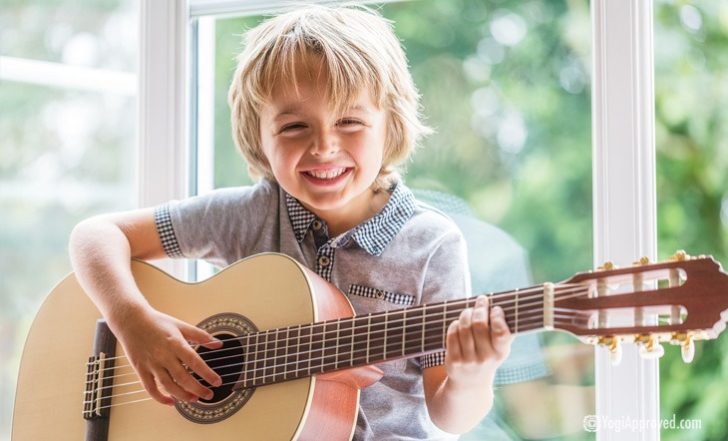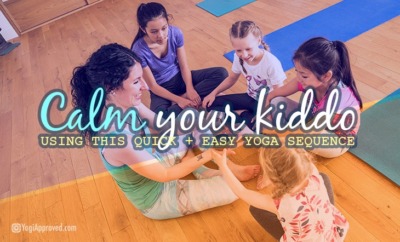Mindful Tools to Help Your Child Cope in This Overstimulated World

Television, tablets, gaming consoles, smartphones, computers – the list could go on. Is our digital world overstimulating our children? Some studies suggest excessive digital stimulation can harm cognitive stimulation and lead to ADHD in younger children.
Cultivating mindfulness in children is becoming an absolute necessity in today’s world. Children, influenced by adults, are connected 24/7 to a digital device and are ultimately becoming more disconnected to the world around them.
Children spend at least 5.5 hours a day on electronics – time that would be better served learning and connecting to themselves.
Children rarely get the chance to explore the Truth of their lives – yes I use the capital “T” consciously – and I have found the easiest way to encourage children to connect with their True Self is to practice mindfulness.
Removing the excessive digital stimulation from our child’s life and encouraging more mindfulness is paramount to their mental, physical and emotional health. Mindfulness encourages focus and a quiet mind, and it also teaches them how to effectively deal with their emotions.
So let’s give them that power.
Here are 7 ways to encourage mindfulness and help your children cope with today’s modern, fast-paced, and technological world:
1. Mandala Coloring
Quiet, focused coloring is a lovely way to encourage focus, creativity and self-expression. Mandalas are spiritual patterns representing the Universe. They have no beginning or end and no rules of expression.
Encourage a quiet room when coloring so your child can focus on their own self-expression, creation and imagination for their mandala. Mindful coloring can also be a great activity to do together, but be sure to keep the intention about self discovery and expression instead of social hour.
We recommend this Mandala Coloring Book for Kids.
2. Trataka
Trataka, or yogic gazing, is a spiritual practice which means “focused gazing” and can be practiced with any object, such as: candles, crystals, feathers or anything appropriate for your child to focus their attention. This practice improves concentration, intuition and is very relaxing.
Let’s try it
- Begin in Easy Seated Pose, or “criss-cross applesauce” with the object in front of your child and their hands on their knees or in Gyan Mudra
- Invite them to relax and gaze at the object for a few moments
- Next, have your child close their eyes and see if they can still see the image with their eyes closed
- If your child does not see the image, encourage them to try again and continue practicing
3. Celestial Communication (Chanting with Hand Movements)
Kundalini Yoga practices celestial communication with mantras and spiritual songs + chosen hand motions. Songs like, “The Itsy Bitsy Spider” or “The Wheels on the Bus” are great examples of celestial communication using nursery rhymes. The songs are accompanied by hand motions, which are great for brain development and focus.
This is a unique way to teach mindfulness to children. The repetition and movement help to quiet the mind and move toward an active meditation. Celestial communication is open to interpretation by the practitioners, so have fun and make it your own. Use any mantra that is helpful to your child that day and get creative with your movements.
Let’s try it using the mantra “I shine brightly”
- I: The hands are in prayer position at the chest
- Shine: Extend the arms forward, palms facing out
- Brightly: Open the arms to the sides palms facing out
- Return to prayer and begin again
Continue the chant and the hand movements for at least a minute, giving the heart a chance to open and the mind the opportunity to become quiet. Always offer your child the opportunity to choose what mantra they would like to use, because this helps them connect to themselves and know their needs.
4. Pranayama
There is no greater mindfulness technique than concentrating on the breath. It doesn’t take much. A deep belly breath is all you need to bring the body and mind instantly together.
Learn more about deep belly breathing from A Simple Guide to Belly Breathing
Pranayama can be practiced anywhere and at any time. However, focused breathing can be tough for children. An excellent Pranayama practice for children is the 5:3 breath which connects the mind, body and spirit. 5:3 breathing also stimulates the calming chemicals in the brain, and releases any tension and anxiety. Pranayama gives the mind the opportunity to be quiet and to focus on the present moment.
Let’s try it:
- Children will begin in Easy Pose with their hands on their knees
- Inhale for the count of five
- Hold the breath in for a count of three
- Exhale for the count of five
- Hold the exhale for a count of three
- Repeat for a couple of minutes
For other great Pranayama tips, check out How to Teach Kids 5 Pranayama Breathing Techniques
5. Pass the Chime
Pass the Chime is a fun way to encourage listening skills, dexterity and a sense of community for children five and older. In order to play, children must slow down, take their time and focus on the activity. Pass the Chime also promotes children to find contentment in calm, quiet activities as opposed to highly stimulated games.
Let’s try it:
- First, find a metal chime with a wooden frame
- Form a circle with your children as you hold the chime and mallet
- Tap the chime, then carefully pass the chime and mallet to the person next to you
- Be sure you both only touch the wooden frame, or the chime will be silenced
- The next person then taps the chime to continue the sound and carefully passes it to the third person
- Continue passing the chime and work to keep it ringing
6. Chime Listening
Chime listening is a great activity to encourage mindful listening and focus. You can use the same chime from the Pass the Chime activity or a meditation bell (http://amzn.to/2dPOyGU) will work too. This activity is a great way for children to learn to quiet their minds and connect to what is around them.
Let’s try it:
- Children will begin in Easy Pose with hands on their knees and eyes closed
- When everyone is settled, tap the chime
- Children must listen actively and hear the sound vibrations of the chime
- Once they cannot hear the chime any longer, they move their hands to their lap
- Remaining seated and quiet, have them continue to listen to the other sounds in the room
- After a moment, invite them to share what other sounds they could hear while seated
7. Bell Walking
Bell walking is an easy and fun mindfulness exercise for children younger than five years old. It teaches children to connect to their minds and bodies by walking steadily, listening actively, finding body awareness and developing mental focus.
Bell walking is a great exercise to show children they are able to calm their breathing and energy whenever they need to. Try it! Give your child the bell to hold with both hands, then walk across the room without the bell ringing. They will definitely learn what is needed to move mindfully and calmly.
The Takeaway
Learning about emotions and ways to cope can be very difficult for growing children. If they are constantly focused on a video game, they are less likely to connect with their changing body. By learning mindfulness skills, we are empowering children with tools for life, like how to connect to themselves. They will have the power to be more aware, become more optimistic, less angry and frustrated, and able to cultivate healthier relationships.
Beginning a mindfulness practice with your child helps him/her to remain connected to themselves in this overstimulated world, and it is easier than you think. Try some of these activities in place of electronics and see the results for yourself. You may find a happier child who better understands themselves and appreciates the smaller blessings in life.
These fun little practices will help your child connect with their mind and body, so please give it a shot and share your experiences in the comments below – we love hearing from you!


This Month's Letter
From the Editor
Monthly motivation and food for
thought from our founder.






























Comments